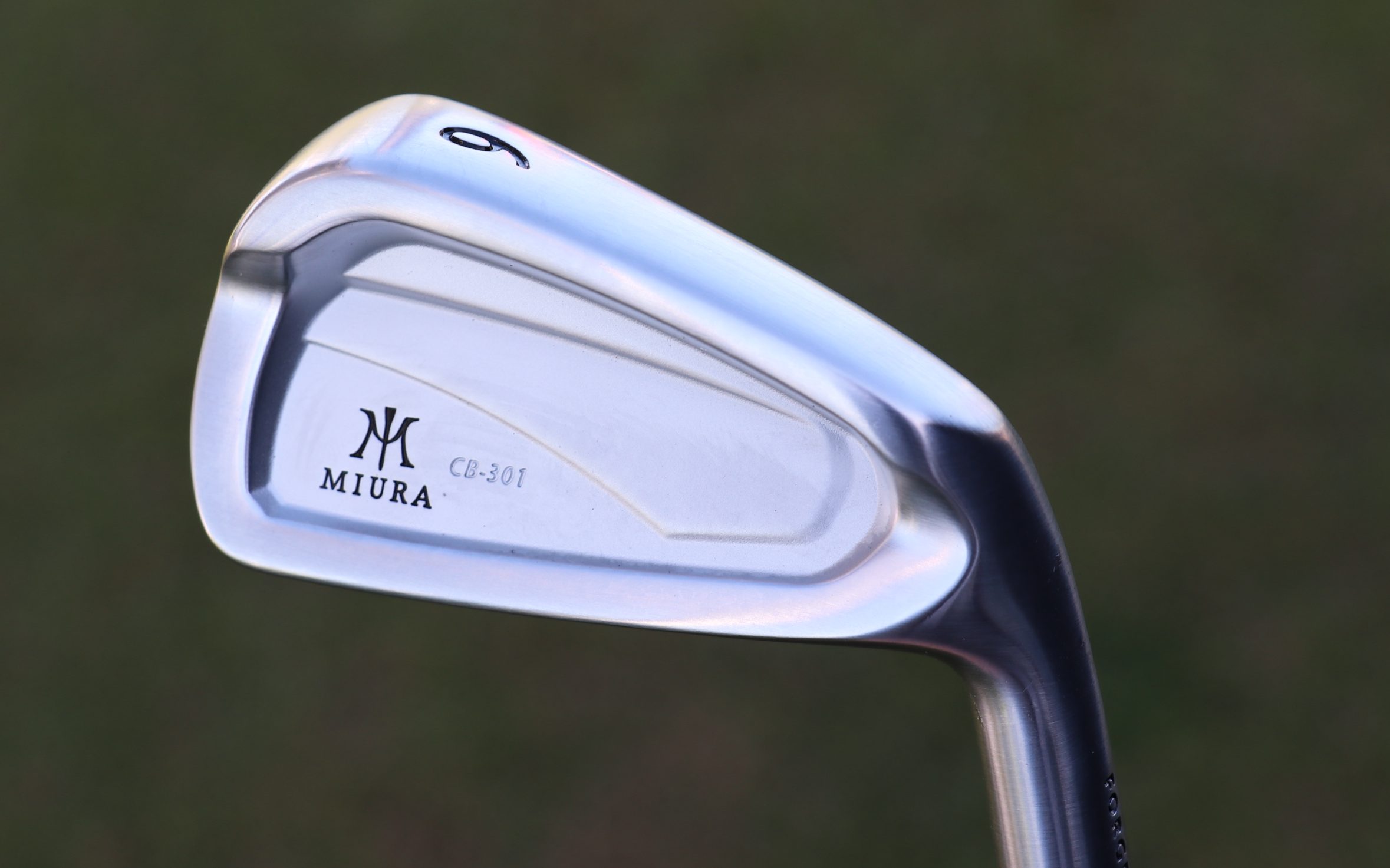
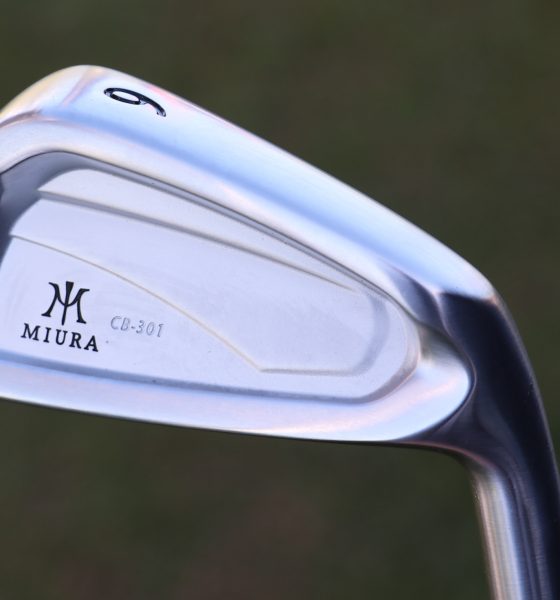
Equipment
WRX Spotlight: Miura CB-301 irons
Product: Miura CB-301 irons
Pitch: From Miura: “The CB-301 takes Miura’s world-renowned forging process and blends it seamlessly with a Tour-inspired shape. The CB-301 combines the feel and playability of a player’s iron with the forgiveness and distance to improve golfers of all skill levels. The full cavity-back design is engineered with a larger sweet spot to ensure greater control and improved performance on all shots. Each club is engineered with a variable sole and cavity thickness designed to optimize center of gravity.”
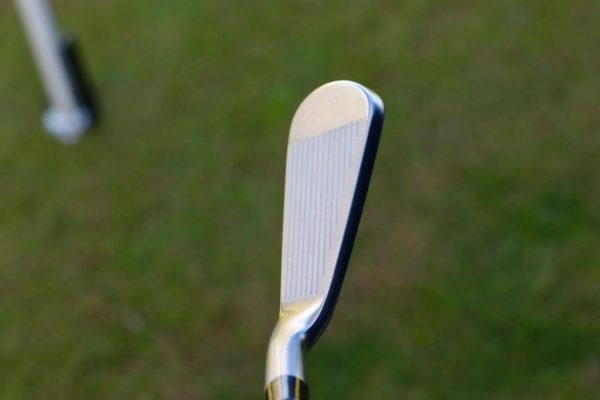
Our take on Miura CB-301 irons
Even in today’s world packed full of information about club fitting and technology, I can’t begin to tell you how many times when talking to golfers outside of the equipment “know,” that they believe forged clubs are only for lower handicaps and pros. Without getting off topic in the second sentence, all I will say is forging and casting are just processes used to manufacture and have no effect on the forgiveness of an individual design — mass properties do!
Now back to the review…When it comes to a forged iron that offers a traditional shape and styling, along with forgiveness, the Miura CB-301 is a great place to start. Launched at the beginning of 2019, the new CB-301 builds on the long legacy of Miura cavity backs, including the original CB-301, CB-201, CB-501, Passing Points, and the more recent CB57.
You’ve most likely heard the story by now — nobody forges a club the way Miura does. Well, they’re right, and for good measure, thanks to the company’s unique process of spin welding the hosel onto the rest of the head. By their, accounts it keeps the grain structure extreme tight in the head, which helps produce the signature “Miura Feel.”
Heres a great video from Miura on the history of the company and the process.
Here’s where the CB-301s separate themselves in the Miura lineup: They offer slightly more offset than the previous models in the Miura CB family, which helps create a look that is more appealing to a larger number of players looking for forgiveness without looking too “game improvement.” Along with the slight increase in offset, the appearance from the top line again fits right into the middle of the players CB and mid-sized cavity category. Add all of this together with the longer heel-toe length and thinner top line, and you have a club built for both distance and forgiveness without sacrificing looks.
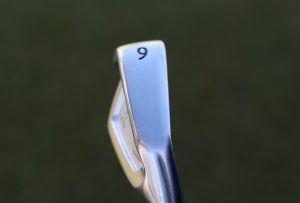
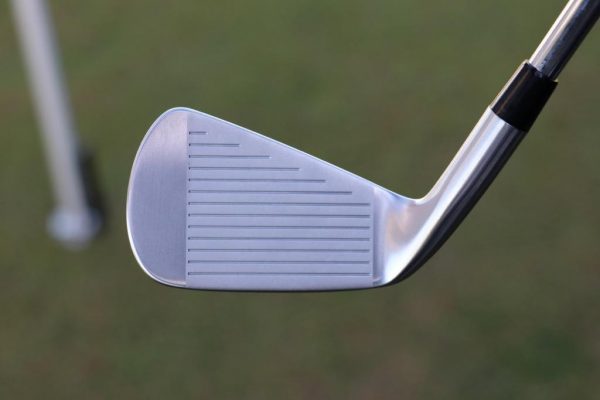
Speaking to the distance game, the CB-301s are a bit stronger-lofted than what you would typically see from a Miura product, with a 44-degree pitching wedge and a 48-degree gap wedge available in the set. With these specs, there are plenty of options for adjustments that could take offset off. For example, bending them weaker or building a nice combo set with the MC-501s like shown below
CB-301
4-iron: 22 degrees
5-iron: 26 degrees (bent 1 degree weak)
6-iron: 30 degrees (bent 2 degrees weak)
MC-501
7-iron: 34 degrees
8-iron: 38 degrees
9-iron: 42 degrees
Pitching Wedge: 46 degrees
This is just one example since there are plenty of ways you could do a combo or not, along with making sure everything is properly gapped through a full iron fitting session. Whether you are looking for a forged distance iron set or some extra forgiveness into the longer irons in a combo, the Miura-CB 301s could be exactly what you are looking for.
And as a reminder, Miura irons are available through their extensive list of fitters and dealers around the world, as well as now directly through their website and e-comm platform.
- LIKE103
- LEGIT8
- WOW3
- LOL5
- IDHT1
- FLOP2
- OB2
- SHANK8
Whats in the Bag
WITB Time Machine: Danny Willett’s winning WITB, 2016 Masters
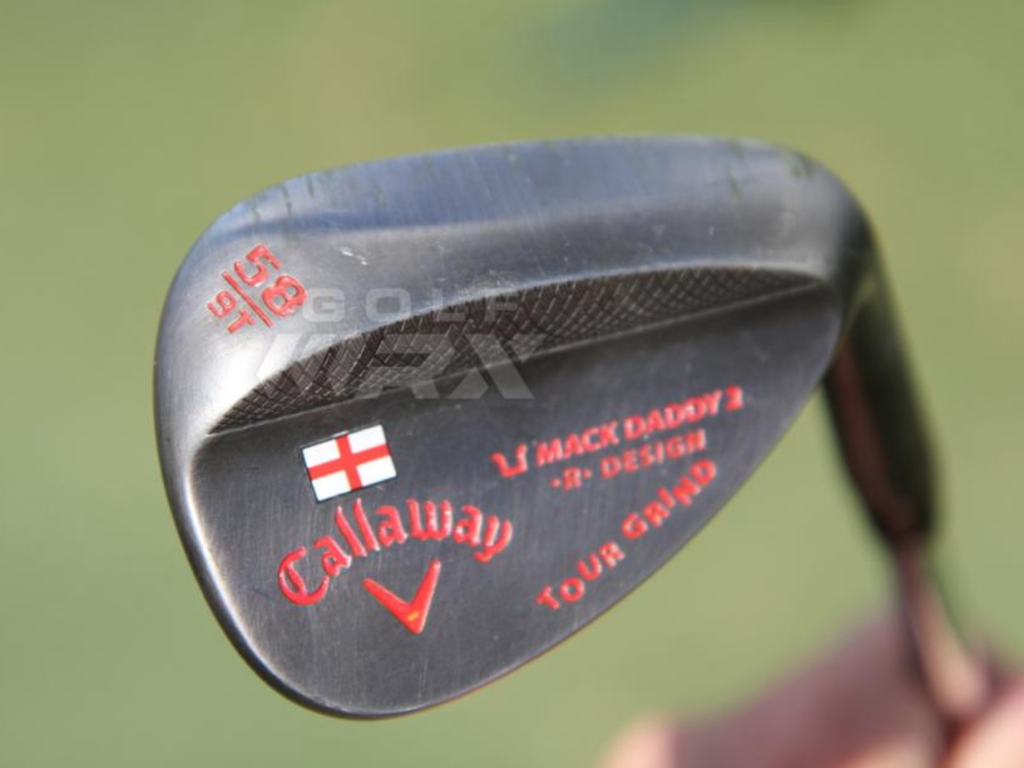
Driver: Callaway XR 16 (9 degrees)
Shaft: Mitsubishi Rayon Diamana W-Series 60 X
Length: 45.5 inches
3-wood: Callaway XR 16 (15 degrees)
Shaft: Mitsubishi Rayon Diamana W-Series 70X
5-wood: Callaway XR 16 (19 degrees)
Shaft: Mitsubishi Rayon Diamana W-Series 80X
Irons: Callaway Apex UT (2, 4), Callaway Apex Pro (5-9)
Shaft: True Temper Dynamic Gold X100 Superlite
Wedges: Callaway Mack Daddy 2 (47-11 S-Grind) Callaway Mack Daddy 2 Tour Grind (54-11, 58-9)
Shaft: True Temper Dynamic Gold X100 Superlite
Putter: Odyssey Versa #1 Wide (WBW)
Lie angle: 71 degrees
Ball: Callaway Speed Regime SR-3
Check out more photos of Willett’s equipment from 2016 here.
- LIKE6
- LEGIT0
- WOW1
- LOL0
- IDHT0
- FLOP0
- OB0
- SHANK0
Equipment
Project X Denali Blue, Black shaft Review – Club Junkie Review
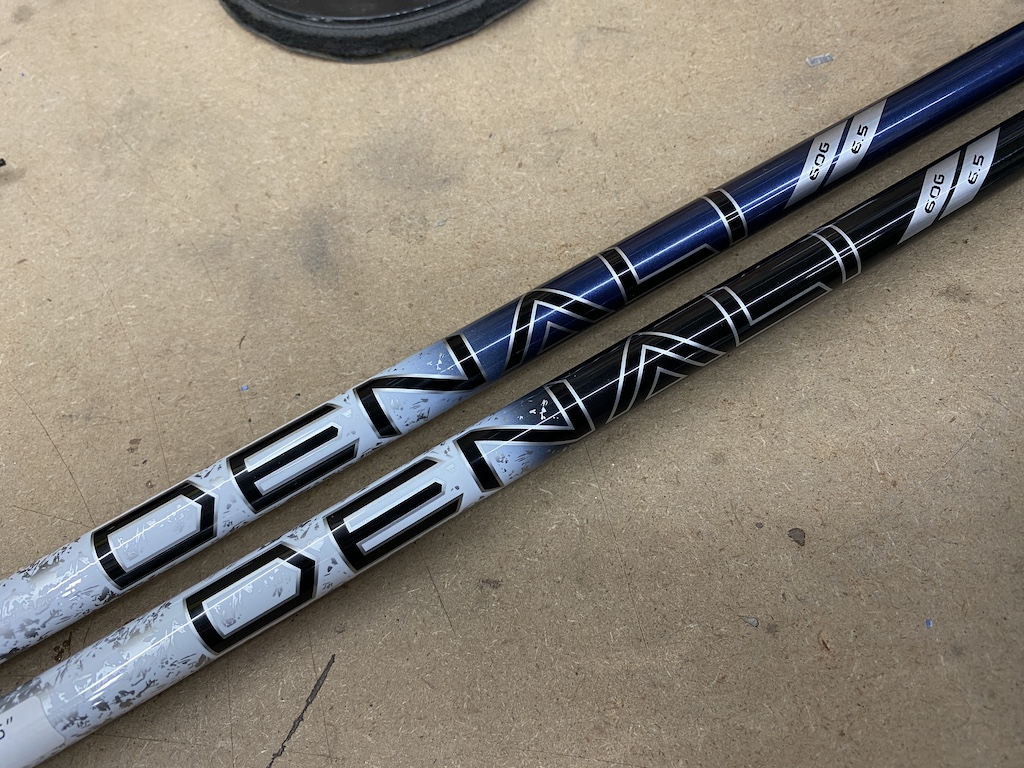
Originally, Project X was known for low-spin steel iron shafts. However, the company might now be known for wood shafts. Denali is the newest line of graphite shafts from Project X. With the Denali line, the company focuses on feel as well as performance.
There are two profiles in the Denali line, Blue and Black, to fit different launch windows. Denali Blue is the mid-launch and mid-spin profile for players who are looking for a little added launch and Denali Black is designed for low-launch and low-spin. Both models are going to offer you a smooth feel and accuracy.
For a full in-depth review check out the Club Junkie podcast on all podcast streaming platforms and on YouTube.
Project X Denali Blue
I typically fit better into mid-launch shafts, as I don’t hit a very high ball so the Denali Blue was the model I was more excited to try. Out of the box, the shaft looks great and from a distance, it is almost hard to tell the dark blue from the Denali Black. With a logo down install of the shaft, you don’t have anything to distract your eyes, just a clean look with the transition from the white and silver handle section to the dark navy mid and tip.
Out on the course, the Blue offers a very smooth feel that gives you a good kick at impact. The shaft loads easily and you can feel the slightly softer handle section compared to the HZRDUS lineup. This gives the shaft a really good feel of it loading on the transition to the downswing, and as your hands get to impact, the Denali Blue keeps going for a nice, strong kick.
Denali Blue is easy to square up at impact and even turn over to hit it straight or just little draws and most of the flex of the shaft feels like it happens right around where the paint changes from silver to blue. The Blue launches easily and produces what I consider a true mid-flight with the driver. While it is listed as mid-spin, I never noticed any type of rise in my drives. Drives that I didn’t hit perfectly were met with good stability and a ball that stayed online well.
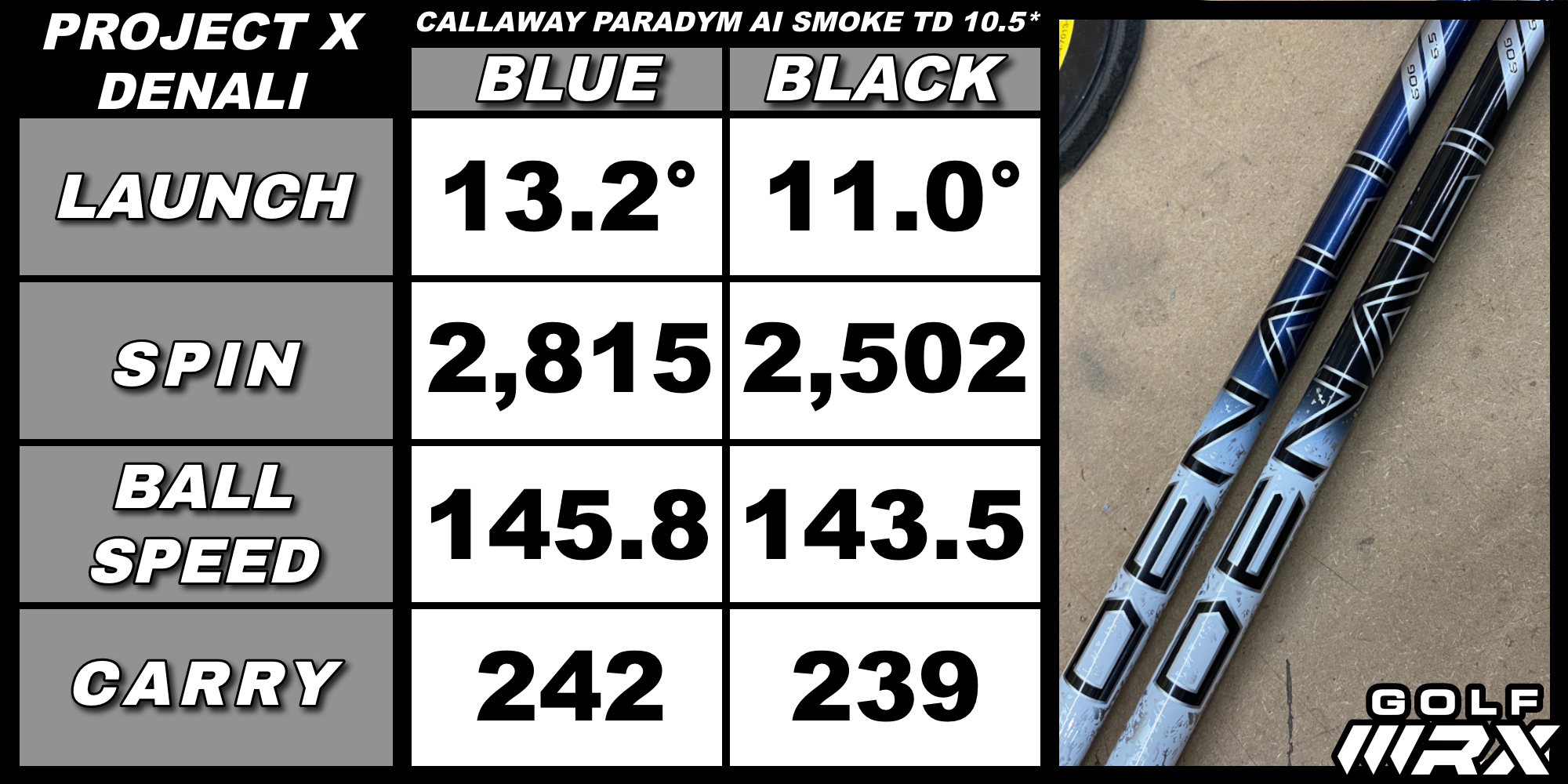
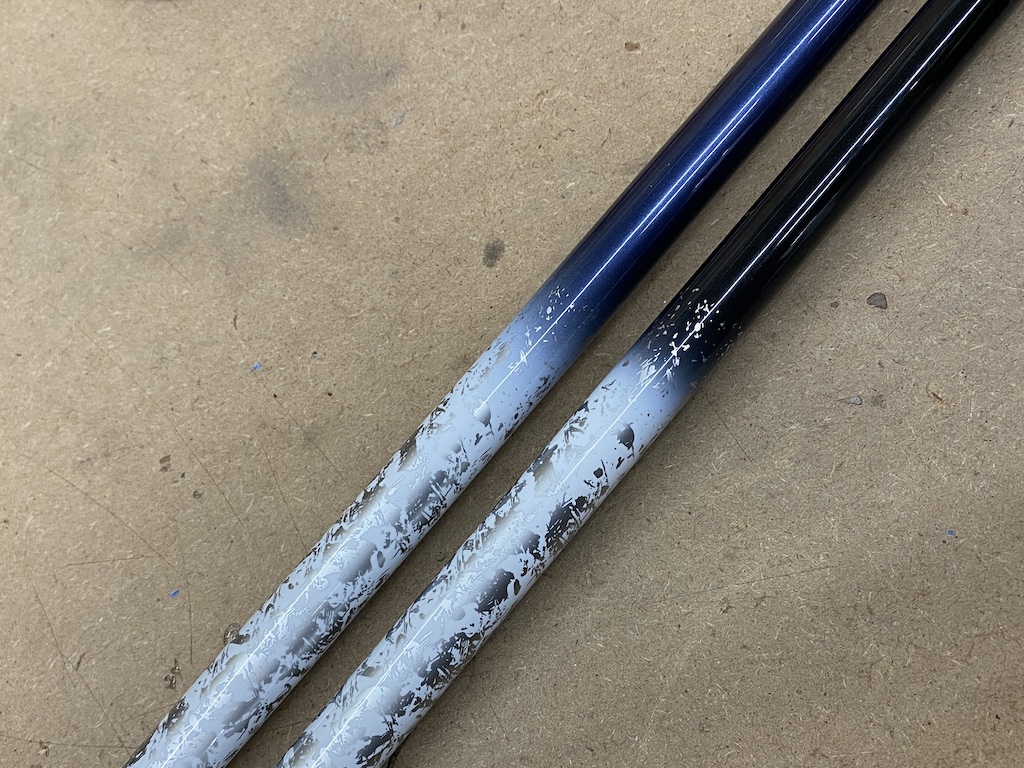
Project X Denali Black
When you hold the Denali Black in your hands you can tell it is a more stout shaft compared to its Blue sibling by just trying to bend it. While the handle feels close to the Blue in terms of stiffness, you can tell the tip is much stiffer when you swing it.
Denali Black definitely takes a little more power to load it but the shaft is still smooth and doesn’t give you any harsh vibrations. Where the Blue kicks hard at impact, the Black holds on a little and feels like keeps you in control even on swings that you try and put a little extra effort into. The stiff tip section also makes it a little harder to square up at impact and for some players could take away a little of the draw from their shot.
Launch is lower and more penetrating compared to the Blue and produces a boring, flat trajectory. Shots into the wind don’t rise or spin up, proving that the spin stays down. Like its mid-launch sibling, the Black is very stable and mishits and keeps the ball on a straighter line. Shots low off the face don’t get very high up in the air, but the low spin properties get the ball out there farther than you would expect. For being such a stout shaft, the feel is very good, and the Denali Black does keep harsh vibrations from your hands.
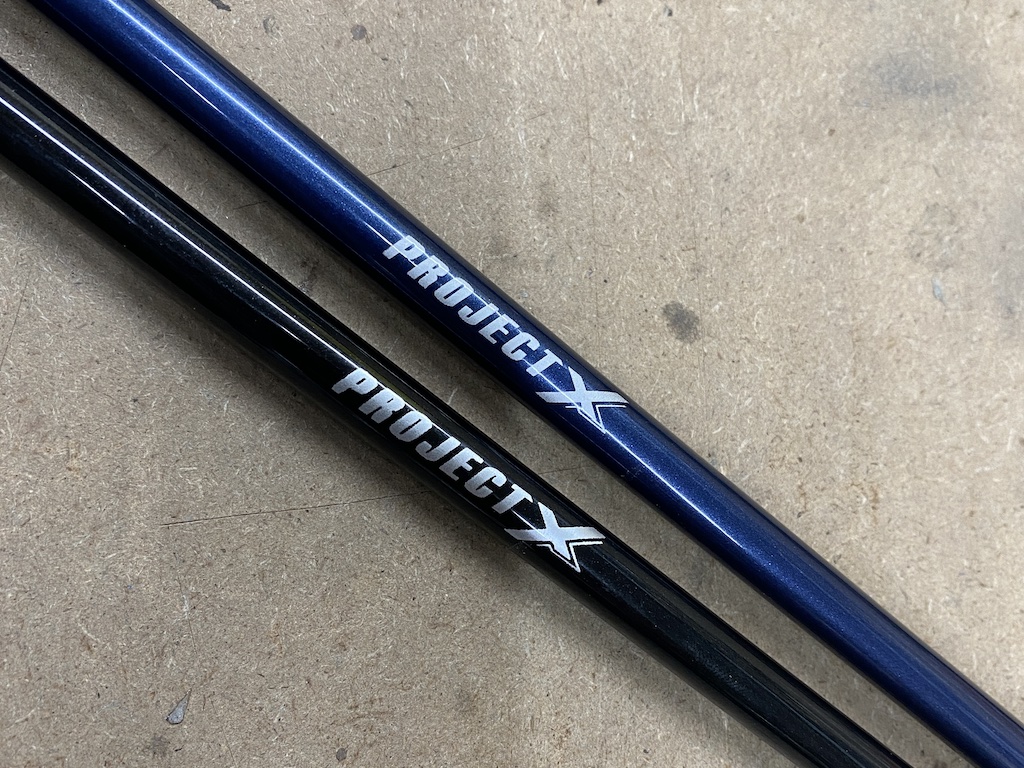
Overall the Project X Denali Blue and Black are great additions to the line of popular wood shafts. If you are looking for good feel and solid performance the Denali line is worth trying out with your swing. Choose Blue for mid-launch and mid-spin or Black for lower launch and low spin.
- LIKE4
- LEGIT4
- WOW2
- LOL0
- IDHT0
- FLOP0
- OB0
- SHANK0
Equipment
What we know about Bryson DeChambeau’s 3D-printed Avoda irons
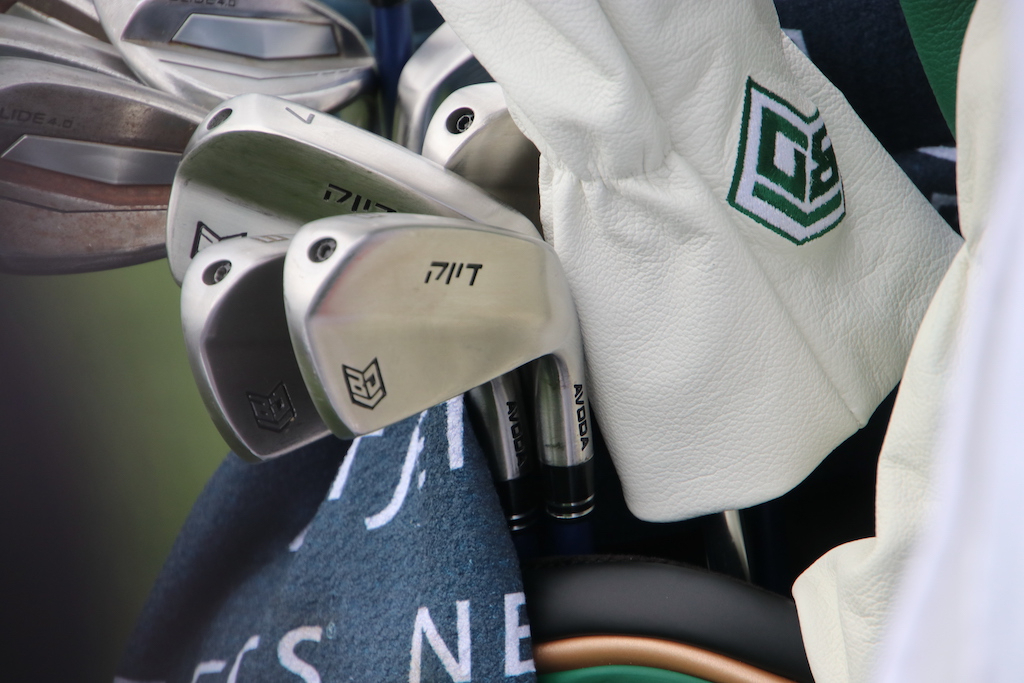
Bryson DeChambeau fired an opening-round 7-under 65 at Augusta National, hitting an impressive 15 of 18 greens in regulation in the process. Golf’s mad scientist’s play grabbed headlines and so too did his equipment. In place of the Ping i230 irons he had in the bag last week for LIV Golf’s Miami event, DeChambeau is gaming a prototype 5-PW set of irons from little-known direct-to-consumer manufacturer Avoda.
What is Avoda Golf?
Founded by Tom Bailey, also a Mike Schy student like Bryson DeChambeau, Avoda Golf is a direct-to-consumer golf equipment company that currently manufactures both single and variable-length irons in one model that are available for pre-order.
What irons is Bryson DeChambeau playing?
Per multiple reports, DeChambeau is playing a custom-designed set of single-length irons that incorporate bulge and roll into the face design. The two-piece 3D-printed irons were reportedly only approved for play by the USGA this week, according to Golfweek’s Adam Schupak.
Regarding the irons, DeChambeau told Golf Channel the irons’ performance on mishits was the determining factor in putting them in play this week. “When I mishit on the toe or the heel,” DeChambeau said. “It seems to fly a lot straighter for me and that’s what has allowed me to be more comfortable over the ball.”
What can we tell about the design of the clubs?
These days, it is a little hard to speculate on what is under the hood with so many hollow body irons. DeChambeau’s irons look to be hollow on the lower section as they do flare back a decent amount. That “muscle” on the back also looks to be fairly low on the iron head, but we can assume that is progressive through the set, moving up higher in the short irons.
A screw out on the toe is probably used to seal up the hollow cavity and used as a weight to dial in the swing weight of the club. From pictures, it is hard to tell but the sole looks to have a little curve from heel to toe while also having some sharper angles on them. A more boxy and sharper toe section looks to be the design that suits Bryson’s eye based on the irons he has gravitated toward recently.
What are bulge and roll, again?
Two types of curvature in a club face, traditionally incorporated only in wood design. Bulge is heel-toe curvature. Roll is crown-sole curvature. Both design elements are designed to mitigate gear effect on off-center strikes and produce shots that finish closer to the intended target line. (GolfTec has an excellent overview of bulge and roll with some handy GIFs for the visual learner)
What else is in DeChambeau’s bag?
Accompanying his traditional Sik putter, Bryson builds his set with a Ping Glide 4.0 wedges, a Krank Formula Fire driver and 5-wood, and a TaylorMade BRNR Mini Driver, all with LA Golf graphite shafts.
- LIKE118
- LEGIT39
- WOW31
- LOL17
- IDHT9
- FLOP9
- OB10
- SHANK24
-

 19th Hole4 days ago
19th Hole4 days agoDave Portnoy places monstrous outright bet for the 2024 Masters
-

 19th Hole3 weeks ago
19th Hole3 weeks agoJohn Daly stuns fans into silence with brutal opening tee shot on PGA Tour Champions
-

 19th Hole2 weeks ago
19th Hole2 weeks agoThings got heated at the Houston Open between Tony Finau and Alejandro Tosti. Here’s why
-

 19th Hole5 days ago
19th Hole5 days agoTiger Woods arrives at 2024 Masters equipped with a putter that may surprise you
-

 19th Hole1 week ago
19th Hole1 week agoReport: Tiger Woods has ‘eliminated sex’ in preparation for the 2024 Masters
-

 19th Hole3 weeks ago
19th Hole3 weeks agoCharlie Woods finds it tough going on American Junior Golf Association debut
-

 19th Hole2 weeks ago
19th Hole2 weeks agoAddiction, spinal fusion, and scam artists – Everything Anthony Kim revealed in candid interview with David Feherty
-

 19th Hole1 week ago
19th Hole1 week agoAnthony Kim says doctors told him that he ‘may not have much time left’ ahead of LIV return



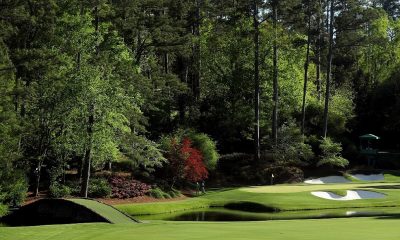





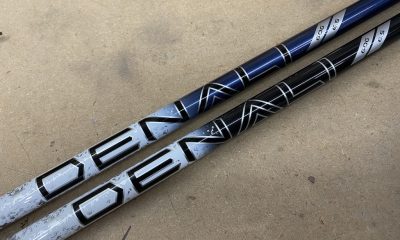



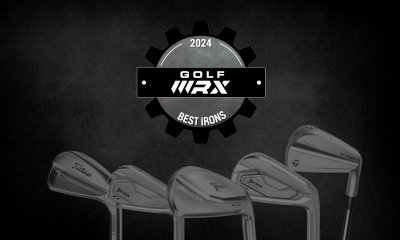

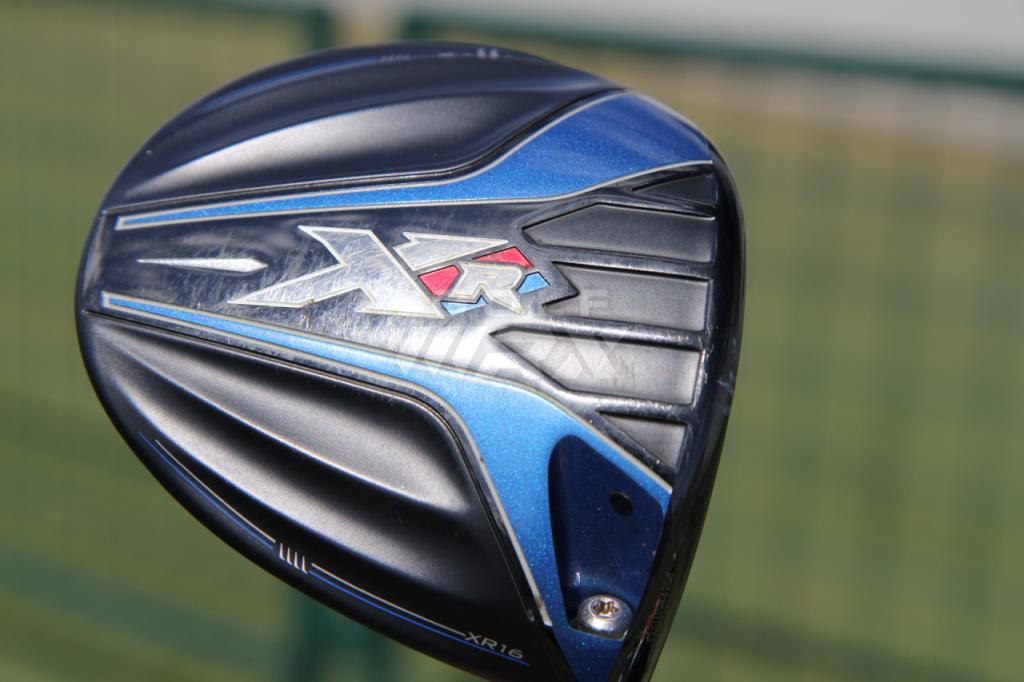
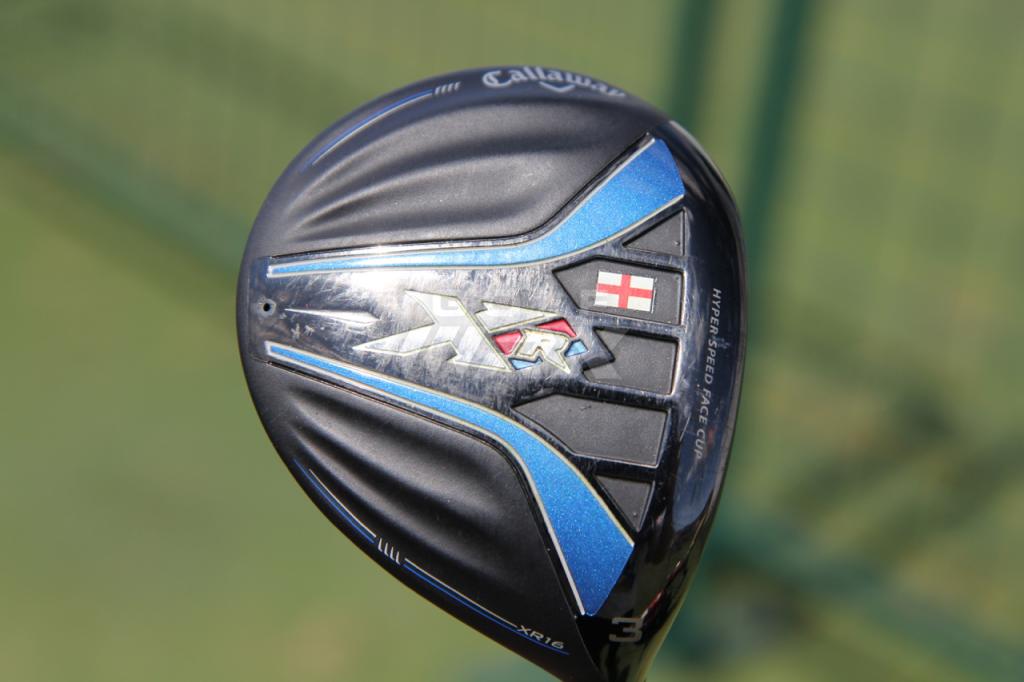

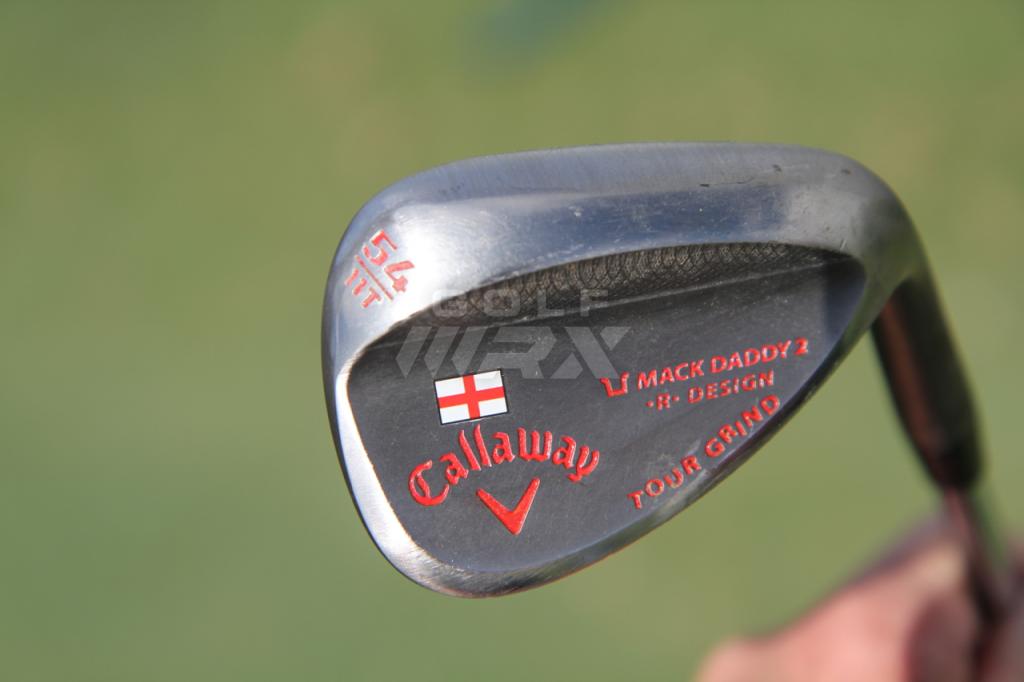
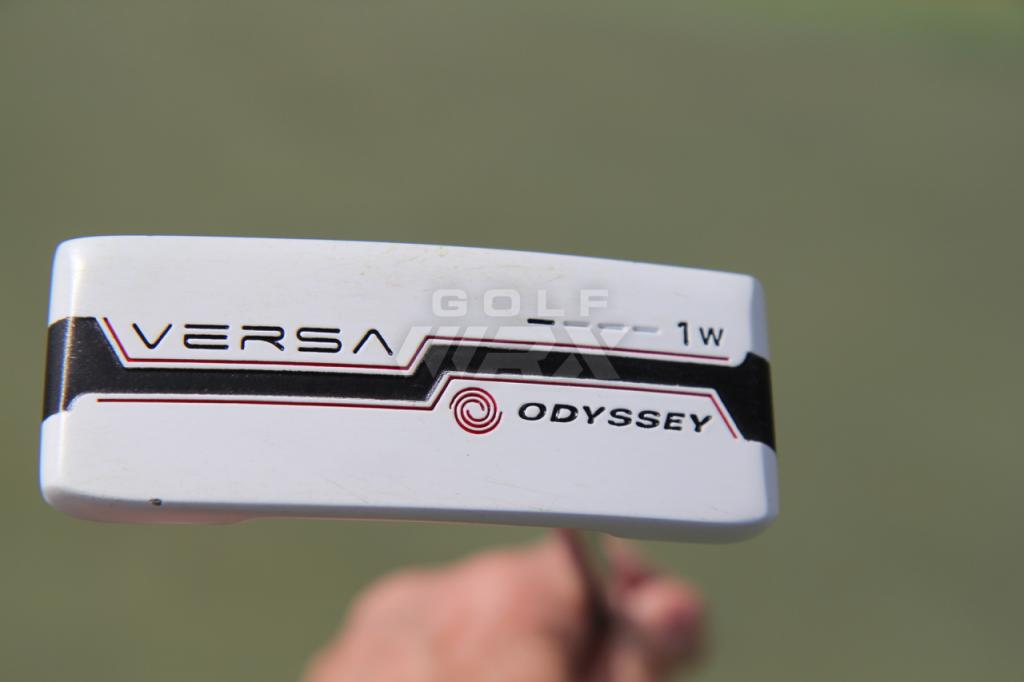












rex235
Apr 4, 2019 at 1:47 pm
Ryan-
You are in Canada, so-
Are Miura CB-301s still RH Only?
Asking for a friend.
Scooter
Apr 2, 2019 at 10:20 am
Looks like a lot of offset to me.
D
Apr 2, 2019 at 1:41 am
The glitter is gone, now that it’s available everywhere
Miura is no longer special
DOA
Their stuck on hosel is nowhere near as good as Mizuno
Funkaholic
Feb 17, 2020 at 3:32 pm
What load of rubbish. Just say you can’t afford them and you are bitter because of it.
Miuralovechild
Apr 1, 2019 at 6:41 pm
I’ll pass cb 202 SL ALL day long!
I own most of them. Cb202 SL/mb001 combo forever! No offset
The best players combo Miura has!!! *
* baby blades would work also
Peter
Apr 2, 2019 at 10:54 am
I have cb202 and love them,but I wish I would of got the combo set you have
Funkaholic
Feb 18, 2020 at 4:21 pm
I don’t know, I hit these at a fitting the other day, they not only didn’t look “offset”, they looked like a better players cavity. They were also crazy soft and had a great ball flight.